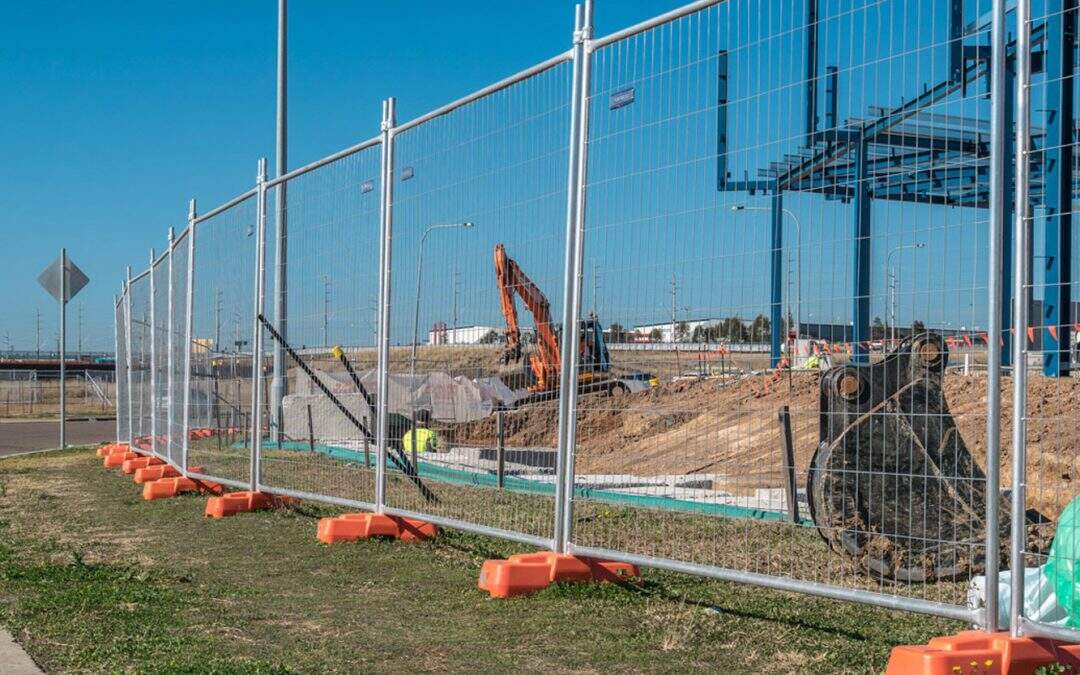OSHA and Regulatory Standards for Temporary Fences on Construction Sites
OSHA Compliance Requirements for Temporary Fence Height, Visibility, and Stability
OSHA has pretty clear rules about what temporary fences need to accomplish regarding height, visibility, and how sturdy they actually are. Most places require at least six feet tall fencing to keep people out who shouldn't be there. But if we're talking about really dangerous spots, eight feet becomes the norm according to that latest OSHA report from 2023 on fall protection. The fence also needs those bright warning signs like "Construction Zone No Entry" so everyone knows there's danger nearby. When it comes to making sure these fences stay standing during bad weather, proper anchoring matters a lot. Good quality fencing should handle winds blowing at around ninety miles per hour without falling over. Studies show this kind of compliance cuts down on collapses by roughly eighty three percent compared to setups that don't follow all the regulations.
Alignment with Local Building Codes and Federal Safety Guidelines
Building codes at the local level often expand on what's required by federal OSHA standards. Many places add their own specific rules, such as requiring buildings to stay back 3 to 5 feet from sidewalks and roads so people can walk safely past them. Take visibility requirements for example. About two thirds of all U.S. cities actually require extra visibility features these days. This includes things like special reflective stripes that help workers stand out during night shifts. Working closely with the Authorities Having Jurisdiction makes sure everything lines up properly. Contractors need to follow both OSHA's strict fall protection rules and whatever local laws apply to how space gets used in public areas. After all, falls remain a major problem in construction, causing nearly one third of all deaths in the industry according to recent data.
Regional Variations in Temporary Fence Regulations: Urban vs. Rural Jurisdictions
Cities generally have much tougher rules when it comes to fencing. Take San Francisco as an example where they actually require 8 foot tall barriers along transportation routes for safety reasons. On the flip side, country areas tend to be more lenient about these things. Farmers can often get away with creative solutions when dealing with all those hills and valleys in their fields. Up north in places like Minnesota, fences need special ratings to handle heavy snow loads. Meanwhile down on the coast, salt air eats through regular materials so fast that most contractors stick to stainless steel or other rust proof options. Because of this, variations in temporary fence regulations can significantly differ depending on whether the jurisdiction is urban or rural. Anyone involved in fence installation must verify the requirements applicable to specific localities.
Material and Design Standards for Durable, Visible Temporary Fencing

Material and Design Standards for Durable, Visible Temporary Fencing
When choosing temporary fencing materials, there's always a trade-off between how long they last, what they cost, and exactly what they need to accomplish. Consider these options:
| Material | Suitable For | Longevity | Maintenance Requirements |
|---|---|---|---|
| Galvanized Steel | Long-term use, construction sites | 10 years | Annual inspection and rust prevention |
| Polyethylene Mesh | Short-term events, crowd control | 3–5 years | Replace faded sections |
| Modular Panels | Wind-resistant, temporary structures | 7–10 years | Regular inspection and cleaning |
Minimum Height Requirements and High-Visibility Features for Safety
Most temporary fences are required to be at least six feet tall. In areas with high traffic or risks, such as road work zones, fences should have bright orange and yellow warning panels for visibility. New guidelines, such as the ANSI/ISEA 107-2020, mandate retroreflective striping for better visibility after dark, enhancing the safety of both workers and pedestrians.
Anti-Climb Enhancements for Temporary Fencing
Anti-climb features are critical for security and safety in construction areas. Options include tight weave mesh to discourage climbing, anti-climb panels that are difficult to grip, tamper-resistant post couplers which prevent disassembly, and other measures that improve the overall integrity of temporary fencing systems by addressing vulnerabilities. Incorporating these strategies can significantly reduce unauthorized entry and enhance perimeter security.
Proper Installation and Maintenance of Temporary Fencing
Ensuring that temporary fences are properly installed and frequently inspected is crucial to maintain safety compliance. Different terrains require specific installation techniques:
- On slopes greater than 15 degrees or unstable ground, adjustable base plates help maintain alignment.
- Consider using rust-proof materials in coastal areas where environmental conditions require extra durability.
- In high-wind zones, double the depth of post embedment from 24 inches to 48 inches to secure stability.
The Role of Access Control and Security
Adding clear access points with secured entries minimizes unauthorized access and enhances security. Integrating these entry points with surveillance and monitoring systems enables quick response to breaches. Such security measures not only protect the site but also meet federal regulations requiring verification of site personnel. Maintaining detailed records of inspections, repairs, and conditions can further support compliance with OSHA standards and safeguard against potential liabilities.
FAQs
What are the minimum height requirements for temporary construction fences according to OSHA?
OSHA generally requires temporary fences to be at least six feet tall. However, in especially hazardous areas, an eight-foot fence may be required as per recent regulations.
Why are additional visibility features required for temporary fencing?
Additional visibility features like reflective stripes are required in approximately two-thirds of U.S. cities to enhance the safety of workers and the public, especially during night shifts.
How are regional regulations different for urban versus rural areas?
Urban areas tend to have stricter regulations for temporary fencing, such as San Francisco's requirement for eight-foot barriers along transportation routes. In contrast, rural areas are usually more lenient, allowing for alternatives better suited to natural landscapes, like using corrosion-resistant materials in coastal areas or snow load-rated fences in northern states.
What are some of the best practices for installing temporary fences on uneven terrain?
When working on slopes exceeding 15 degrees or unstable ground, it's recommended to use adjustable base plates to maintain proper alignment, double the post embedment depth from 24" to 48" in high-wind zones, and ensure a 4-foot setback from public rights-of-way.
How important are routine inspections for temporary fencing compliance?
Routine inspections are crucial for OSHA compliance and legal protection. Key inspections include bi-weekly stability tests that ensure structural soundness by applying lateral pressure at stress points. Documentation of these inspections fulfills OSHA's requirements for regular and periodic evaluations.
Table of Contents
- OSHA and Regulatory Standards for Temporary Fences on Construction Sites
- Material and Design Standards for Durable, Visible Temporary Fencing
- Proper Installation and Maintenance of Temporary Fencing
-
FAQs
- What are the minimum height requirements for temporary construction fences according to OSHA?
- Why are additional visibility features required for temporary fencing?
- How are regional regulations different for urban versus rural areas?
- What are some of the best practices for installing temporary fences on uneven terrain?
- How important are routine inspections for temporary fencing compliance?

